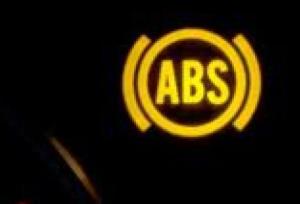
The majority of today’s vehicles come with an anti-lock braking system as a common feature. In caring for your automobile, it’s important to understand how each component operates. In doing so, you’ll be able to recognize when something isn’t working properly and can schedule an appointment to have it fixed before it becomes a major repair. In this post, we’ll cover the anti-lock braking system (ABS). The ABS helps you safely stop your automobile in situations that are less than ideal, like when you’re driving on slippery roads or have to brake quickly to avoid an accident. As its name aptly connotes, the ABS prevents the wheels on your car or truck from locking up so your vehicle doesn’t skid uncontrollably.
How does the ABS work?
The anti-lock braking system is designed to keep the wheels from skidding when you decelerate. When the ABS becomes engaged, you not only stop faster, you are able to steer while you stop. But how does the ABS know when a wheel is about to lock up? There are 4 components your vehicle’s ABS – the speed sensors, valves, pump and controller. The controller is continuously monitoring the speed sensors looking for unordinary or rapid decelerations, like when a wheel locks up. When this happens, the controller reduces the hydraulic pressure to the brakes until it notices an acceleration. This allows the tires to decelerate at the same rate as the car or truck. If you’ve ever felt a “pulsing” sensation when you applied your anti-lock brakes hard, you were experiencing the ABS at work.
What about the Anti-Lock Brakes Warning Light?
With so many lights on a car dasboard, it can get confusing to know what each means. Here are answers to some of common questions you may have about the anti-lock brakes warning light on your dash.
-
- What is the ABS warning light? Whenever you turn the key in the ignition and start your car, the ABS computer performs a self test. You’ll notice the light illuminates briefly when you start your vehicle. If the computer that monitors the anti-lock braking system finds a problem (e.g. a hydraulic pump or valve isn’t responding), the warning light will illuminate on your dashboard and will remain lit.
- Exactly what does it mean when the anti-lock brakes warning light turns on while I’m driving? If the ABS light illuminates while you’re driving, it signifies there’s a problem with the ABS – it’s not functioning. When this happens, you are still able to use your brakes, but without the added benefits of the anti-lock feature. In most cases, the light will turn off the next time you start your car. If, after it cycles through its self test, the light remains on, you should schedule an appointment with Country Road Automotive, in Lincoln Park, NJ. We’ll check the computer and perform a diagnostic to determine what is causing the problem.
- Is my vehicle still safe to operate if the ABS warning light is illuminated? Yes, your automobile is safe to drive, however, you should have us look it over in the event the light remains illuminated. It’s also important to note if both the ABS and Brake System warning lights come on simultaneously while you’re driving, you should stop your car or truck as soon as you can safely do so and call a towing company.
Tips for Driving with Anti-Lock Brakes
That pulsing sensation that comes from the anti-lock brakes can feel somewhat disturbing. Remember, it’s normal. Even so, we think it’s important to know how to use your anti-lock brakes. The National Safety Council provides several tips for driving with ABS. You can click here to download and read their information sheet “Tips for Driving with ABS (Anti-Lock Brake Systems).”
Should you be concerned about your vehicle’s braking system, have them checked right away (see our page on Brake Repair to learn some of the signs you may need a brake job). The technicians at Country Road Automotive in Lincoln Park, New Jersey, can inspect your braking system for signs of rough spots or damage. We’ll also let you know how much is left on your brake pads and will examine the brake lines for cracking and corrosion.

